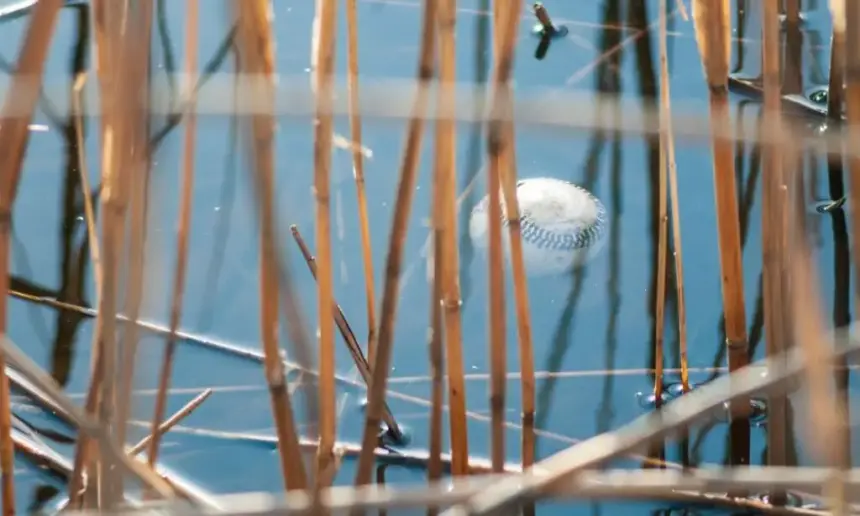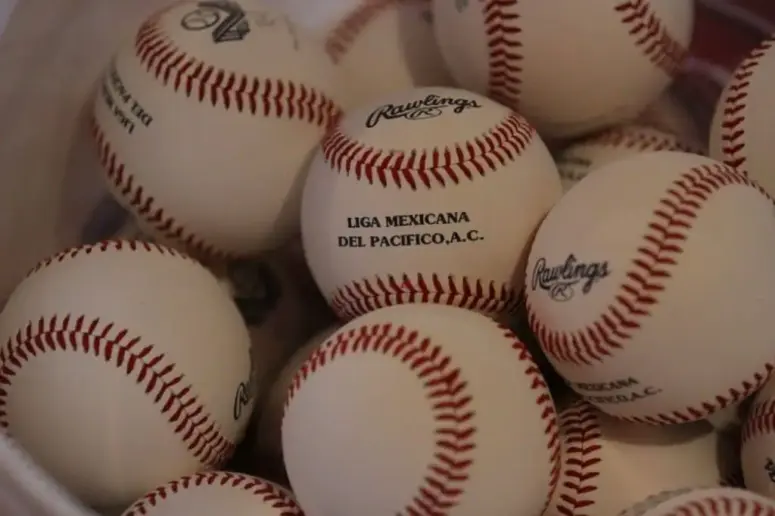Do Baseballs Float? (Explained!)
One of the coolest things you can witness while watching live baseball is the so-called splash hit.
It’s also one of the rarest events to experience at the ballgame.
Splash-making home runs are of course only possible at the ballparks that are next to a body of water.
The most famous among those are the PNC Park in Pittsburgh, next to the Allegheny River, or Oracle Park in San Francisco, which sits next to the McCovey Cove.
Besides, there are several Minor League and amateur baseball fields that also provide their visitors a chance to witness splash hits.
Watching these majestic homers fly over the wall and into the river or the sea, one can’t help but wonder what happens to those balls.
Do baseballs float or sink?
Below, I’ll try to answer that question and explain what happens to a baseball once it hits the water.
Table of Contents
Do Baseballs Float?

If you’ve ever watched a game from Oracle Park or PNC Park on TV or maybe just checked the splash hits highlights on YouTube, you’ve probably noticed people in kayaks or even swimmers in the water next to these ballparks,
As soon as the homer starts heading for the water, these people race to reach the ball and get themselves a cool souvenir.
Some years ago, teams even had trained dogs, retrievers mostly, who would swim and retrieve the ball from the water.
If the ball sank immediately, this wouldn’t be possible. So we know for a fact, because we can see it with our own eyes, that the baseballs float in water.
However, these souvenir hunters pick the ball up almost immediately, so we only know that the ball initially floats, but not for how long.
The inside of the baseball, cork center wound in the yarn, is fairly buoyant and helps the ball stay above the water.
In addition, a leather shield keeps the water out from the center of the ball, at least for some time. It’s simple physics at work.
When the volume of the water displaced by a certain object is less than its weight, the object will flow.
A Baseball falling into the river or the sea replaces more water than its weight, so, therefore, it floats.
At least most of the time.
How Long do Baseballs Float?
So the answer to the question “do baseballs float” is yes.
Still, they can’t stay afloat for too long.
Despite the tightly packed inside and the protective cover made of leather, baseballs rarely float for more than a minute.
So, kayakers and swimmers waiting for the ball on the other side of the wall have to react really fast.
After it stays above the water for a short period of time, the baseball will start to absorb water.
Even though parts of leather covering are tightly stitched together, the water is bound to break into the interior of the ball sooner rather than later.
As the water sips inside, it soaks the yarn that is wrapped around the cork in the center of the ball.
Pretty quickly, the density of the baseball will increase and the ball will weigh more. When that happens, the ball will sink in a matter of seconds.
The time the baseball stays afloat also depends on the kind of water it falls into.
Baseballs, like any other object, will float longer in salt water than in fresh water. Due to the higher density of the salt water, the buoyancy of the ball increases.
So, ball retrievers in San Francisco Bay awaiting splash hits from the Oracle Park will have a bit more time to get to the ball than those in Allegheny River next to the PNC Park in Pittsburgh.
What are Baseballs Made of?

Now that you know that baseballs can float, at least for a little bit, let’s see what makes them float, or, what are they made of.
All baseballs used in the MLB have to be manufactured the same way and using the same materials.
The inner core of the baseball, also known as “pill”, is made of rubber-coated cork. The cork is encased in two extremely thin rubber layers.
This part of the ball is almost three inches wide and weighs about half an ounce.
The pill is wrapped in several layers of yarn which is wound up around the cork under high tension.
Three yarn layers are made of wool with a total length of 219 yards.
The fourth yarn layer, 150 yards long, is a polyester-cotton blend white yarn.
The tightly wrapped pill is coated with rubber cement or latex adhesive and then covered with two pieces of white cowhide.
These two pieces are hand-stitched with red cotton thread, creating exactly 216 raised stitches.
How to Dry Waterlogged Baseballs
If your baseball falls into the water, it doesn’t necessarily become unusable.
Just like baseballs waterlogged in the rain, they can be dry out and used again.
They will, however, lose some of the properties and won’t behave perfectly like a new ball, but they can still be utilized in non-throwing exercises such as soft toss.
You should avoid leaving baseballs to dry out in the sunlight as it will cause the hide of the ball to shrink and the ball will become much harder.
A better option is to leave them in a dry and dark place, like a garage. Another alternative is to dry them in the oven.
Put the balls on the middle oven rack and heat the oven to 180 degrees or less.
Leave them in the oven for a couple of hours. The low heat setting will prevent shrinkage.
Conclusion
Thanks to the tightly wound innards and outer covers made of leather, we can say that the baseballs are fairly buoyant.
They will float to a certain extent and stay above the water for a short period of time.
Otherwise, all the people camping outside the right field walls in Pittsburgh and San Francisco hoping to grab themselves a game ball would be wasting their time.
Still, the regulation baseballs are not perfectly protected from water.
The stitching will eventually let up and the water will find its way to the inside of the ball, sinking it in the process.




